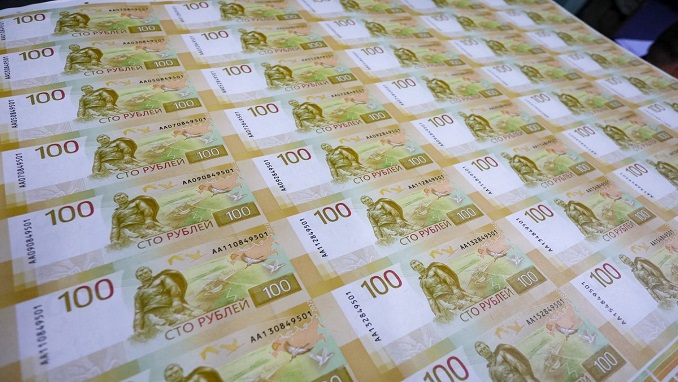
The Russian rouble dropped even more on Tuesday as the market comes to terms with sanctions and restrictions against Russian oil.
The latest round of Western sanctions against Russia over its invasion of Ukraine is beginning to pinch the country’s economy.
The rouble lost about 8 percent against the dollar last week and is on course for a monthly decline after an oil embargo and price cap came into force. The tumble comes as the rouble struggles to consolidate a slight recovery from last week’s slide.
The finance ministry has said the recent slump was related to recovering imports.
The rouble remains, however, the best-performing major currency against the dollar this year. This has been due to support from capital controls and reduced imports.
The First Deputy Prime Minister in Russia, Andrei Belousov, said that a weaker rouble is more beneficial due to falling exports and revenues.
“The strong rouble has played its role,” Belousov said. “In these conditions … it would be good to have a rouble rate of 70-80 per dollar.”
Brent crude oil, a global benchmark for Russia’s main export, was up 0.4 percent at $84.2 a barrel while Russian stock indexes were mixed.
Siluanov said that an oil price cap imposed by the Group of Seven major economies is squeezing Russian export income and will potentially push Moscow’s budget deficit higher than the expected 2 percent of GDP next year.
Expert economists say that it is still too early to fully assess the impact of the G7 oil price cap and the European Union’s ban on Russian crude imports, which came into effect on Dec. 5.
However, initial signs suggest that Russia’s economy is beginning to feel the pinch.
Economists say that a key consequence of a weakening ruble will be upward pressure on inflation due to higher import costs. The Bank of Russia (CBR) ended its run of interest rate cuts in October and upon keeping its monetary policy unchanged in December, warned that inflationary risks “prevail” over disinflationary ones.
If the ruble continues to fall in 2023, Farr suggested that the CBR may be forced to look at reintroducing rate hikes in order to keep inflation under control, and Capital Economics believes the erosion of Russian resilience to Western sanctions will emerge as a key theme of 2023.

Be the first to comment